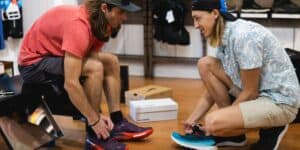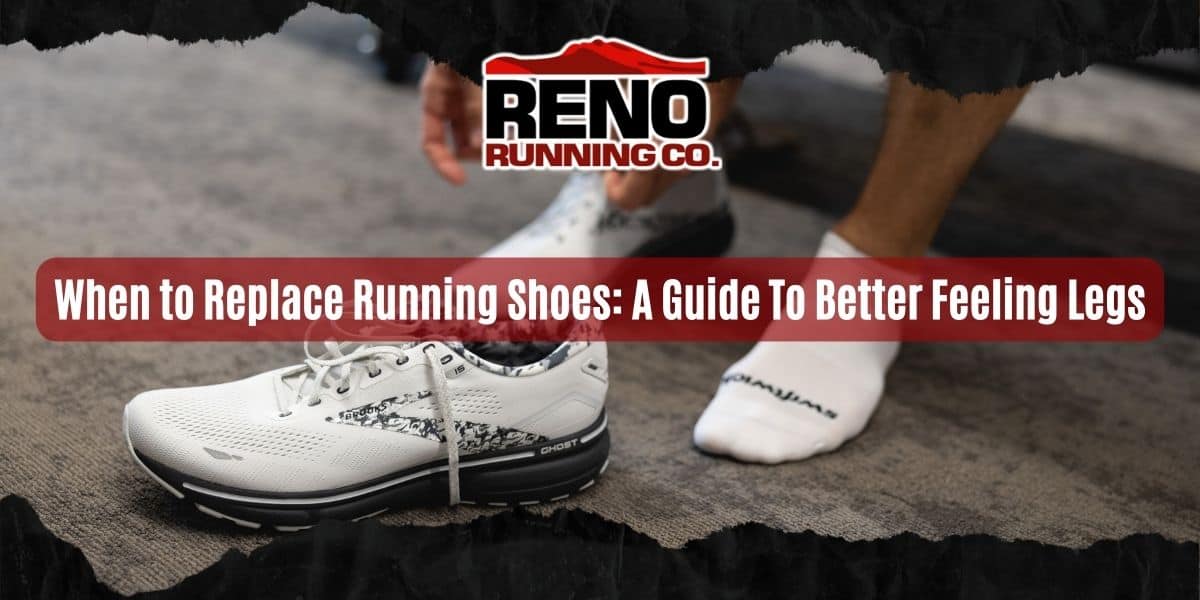Your faithful pair of Brooks running shoes has been through countless miles by your side, supporting you through the highs and lows of your running journey. However, there comes a time when even the most reliable companions must retire to make way for fresh gear. Recognizing the signs that indicate it’s time to part ways with your beloved shoes is crucial for maintaining optimal performance and preventing injuries.
 Typically, it’s recommended to replace your running shoes every 300–500 miles. Around this mileage range, the midsole cushioning begins to lose its resilience, diminishing its ability to absorb shock effectively. This can result in increased impact on your muscles and joints, potentially leading to discomfort or injury. If you’re averaging 15 miles per week, plan to replace your shoes every five to eight months. Monitoring your mileage is easy if you track your runs with a GPS watch or smartphone, but if not, you can estimate based on your weekly running distance.
Typically, it’s recommended to replace your running shoes every 300–500 miles. Around this mileage range, the midsole cushioning begins to lose its resilience, diminishing its ability to absorb shock effectively. This can result in increased impact on your muscles and joints, potentially leading to discomfort or injury. If you’re averaging 15 miles per week, plan to replace your shoes every five to eight months. Monitoring your mileage is easy if you track your runs with a GPS watch or smartphone, but if not, you can estimate based on your weekly running distance.
Several factors influence the lifespan of your running shoes:
- Minimalist shoes with less cushioning typically wear out around 300 miles.
- Traditional and maximum cushioning shoes tend to last until approximately the 500-mile mark.
- Heavier individuals may need to replace their shoes sooner than lighter runners, regardless of shoe type.
- Casual wear of your running shoes also contributes to their total mileage.
- Keep an eye out for significant wear and tear, such as heel damage, worn soles, or visible rips and tears.
 If you begin experiencing discomfort in your feet, legs, knees, hips, or back during or after your runs, it may be a sign that your shoes have reached the end of their lifespan. Similarly, the development of blisters or hot spots where you’ve never experienced them before suggests it’s time for a new pair.
If you begin experiencing discomfort in your feet, legs, knees, hips, or back during or after your runs, it may be a sign that your shoes have reached the end of their lifespan. Similarly, the development of blisters or hot spots where you’ve never experienced them before suggests it’s time for a new pair.
To prolong the life of your running shoes, consider these tips:
- Rotate between two pairs of shoes, preferably with different designs, to provide your body with a slight cross-training advantage and allow the midsoles to decompress and shoes to dry out between runs.
- Remove your shoes properly by unlacing them instead of using the other foot to pry them off. This will help maintain the structural integrity of the shoes.
- Reserve your running shoes exclusively for running to prevent premature wear and tear from casual use.
 By recognizing the signs of wear and following these tips, you can ensure that your Brooks running shoes continue to serve you well, mile after mile, while prioritizing your comfort and performance on the road or trail.
By recognizing the signs of wear and following these tips, you can ensure that your Brooks running shoes continue to serve you well, mile after mile, while prioritizing your comfort and performance on the road or trail.


